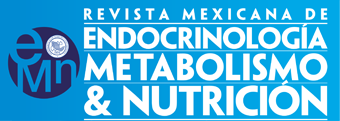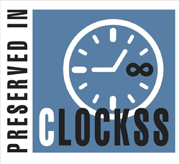- INICIO
HOME - LEER
BROWSE - INFORMACIÓN
INFORMATION- INFORMACIÓN DE LA REVISTA / JOURNAL INFORMATION
- COMITÉ EDITORIAL / EDITORIAL BOARD
- PROCESO DE REVISIÓN / EDITORIAL & PEER REVIEW
- ÉTICA EDITORIAL / ETHICAL POLICIES
- FUENTES DE INGRESO / FUNDING
- PROCEDIMIENTO PARA QUEJAS / COMPLAINTS
- ACCESO ABIERTO Y LICENCIA / OPEN ACCESS & LICENSING
- AUTORES / AUTHORS
- PATROCINADORES / SPONSORSHIP
- PUBLICAR
PUBLISH - CONTACTO
CONTACT
Ética editorial / Ethical policies
La revista sigue el código de buenas prácticas descrito por el Committee on Publication Ethics (COPE). A continuación, se detallan brevemente todos los puntos. Para más información por favor, visite la página oficial en Core practices en COPE.
Protección de personas y animales
Todos los estudios que involucren datos, maniobras, tratamientos, etc., en humanos, deberán de contar con la autorización por escrito de un comité de ética de la institución participante, el cual debe ser anexado a los papeles sometidos en la plataforma, además de seguir las norma éticas de la Asociación Médica Mundial y la Declaración de Helsinki disponible en: http://www.wma.net . Los autores deben mencionar en el apartado “Métodos” que los procedimientos utilizados en los pacientes y controles han sido realizados tras la obtención de una autorización por el comité de ética de su institución.
Confidencialidad
Los autores son responsables de seguir los protocolos establecidos por sus respectivos centros sanitarios para acceder a los datos de las historias clínicas para poder realizar este tipo de investigación científica, por lo que deberán declarar el cumplimiento de esta exigencia. El autor tiene la obligación de garantizar que está en posesión del consentimiento informado por escrito para la participación de cada sujeto en el estudio. Este documento debe ser anexado en la plataforma del sitio. Los autores deben mencionar en el apartado “Métodos” que los procedimientos utilizados en los sujetos de estudio fueron realizados tras obtención de un consentimiento informado.
Privacidad
El autor es responsable de garantizar asimismo el derecho a la privacidad de los pacientes protegiendo su identidad tanto en la redacción del artículo como en las imágenes. No utilizará nombres, iniciales o números de historia clínica del hospital (o cualquier otro tipo de dato irrelevante para la investigación que pudiera identificar al paciente) ni en el texto, ni en las fotografías; a menos que dicha información sea esencial para los objetivos científicos, en cuyo caso podrá recogerla en el artículo siempre que el paciente o su progenitor o tutor otorgue el consentimiento informado por escrito para su publicación.
Financiación
Los autores deberán declarar la procedencia de cualquier ayuda económica recibida para el desarrollo de la investigación o la publicación.
Autoría
En la lista de autores deben figurar únicamente aquellas personas que cumplen los requisitos de autoría. Y todas las personas que cumplan los requisitos de autoría deben figurar en la lista de autores.
La revista sigue los requisitos establecidos por el Comité Internacional de Editores de Revistas Médicas (ICMJE) para la autoría (Uniform Requirements for Manuscripts Submitted to Biomedical Journals). Los requisitos para la autoría son:
– Haber participado en la concepción y diseño, la adquisición de los datos, el análisis e interpretación de los datos del estudio que ha dado como resultado el artículo en cuestión.
– Haber participado en la redacción del texto y en las posibles revisiones de éste.
– Haber aprobado la versión final para publicación.
– Haber acordado la rendición de cuentas de todos los aspectos del estudio, para resolver preguntas relacionadas con la exactitud e integridad de cualquier tema relacionado con el mismo.
Los autores deben cumplir los cuatro requisitos para constar como autores. El autor de correspondencia es el responsable de asegurar que todos los coautores cumplan con los requisitos para la autoría. Cada autor está de acuerdo en que el autor de correspondencia será el responsable de la presentación del manuscrito a la revista. Al presentar este manuscrito, cada uno de los autores indica que ha tenido acceso completo a todos los datos de este estudio y asume la responsabilidad completa y pública de la integridad y la exactitud del análisis de los datos.
Una vez enviado el trabajo, no será posible realizar cambios en el orden y número de autores, por lo que todas las cuestiones relacionadas a la autoría deben estar resueltas antes de enviar el manuscrito por primera vez.
En caso de autoría colectiva, se incluirá el nombre de los redactores o responsables del trabajo seguido de «y el Grupo...» cuando todos los miembros del grupo se consideren coautores del trabajo. Si se desea incluir el nombre del grupo, aunque no todos sus miembros sean considerados coautores, se mencionarán a los autores responsables seguido de «en nombre del Grupo...» o «por el Grupo...». En cualquier caso, los nombres e instituciones de los miembros del grupo se incluirán en un anexo al final del manuscrito.
Las personas que contribuya significativamente al trabajo pero que no cumplan los requisitos de autoría deben ser mencionados en los Agradecimientos. Se espera que las personas citadas en los agradecimientos hayan dado su permiso para ser citadas.
La revista declina cualquier responsabilidad sobre posibles conflictos derivados de la autoría de los trabajos que se publican en ella.
Conflicto de intereses
Existe conflicto de intereses cuando el autor tuvo o tiene relaciones económicas o personales que puedan ser consideradas como causa de sesgo o de influir en los resultados del estudio. El potencial conflicto de interés existe con independencia de que los autores consideren que dichas relaciones influyen o no en su criterio científico. Los autores describirán, en la carta de presentación y en la sección de información adicional de la plataforma, cualquier relación financiera o personal que tuvieran o tengan, en el momento de escribir o remitir el manuscrito, con personas o instituciones y que pudieran dar lugar a un conflicto de interés en relación con el manuscrito que se remite para su publicación. Lo que se declare se hará constar en la revista impresa y digital.
Obtención de permisos
Los autores declararán que el contenido del manuscrito es original y que no ha sido publicado previamente, ni se ha enviado o sometido a consideración en cualquier otro formato de publicación ya sea en su totalidad o alguna de sus partes. Lo contrario constituye un grave incumplimiento de la ética científica. Del mismo modo, los autores que reproduzcan en su artículo materiales publicados previamente (texto, tablas o figuras) son los responsables de obtener los permisos oportunos para reproducir en la revista dichos materiales. Los autores deberán haber obtenido autorización escrita del propietario (copyright’s holder) de dicho material. y remitir copia a la revista.
Plagio
La revista no acepta material previamente publicado y no considerará para su publicación manuscritos que estén remitidos simultáneamente a otras revistas, ni publicaciones redundantes o duplicadas, esto es, artículos que se sobrepongan sustancialmente a otro ya publicado, impreso o en medios electrónicos. Los autores deben informar en la carta de presentación acerca de envíos o publicaciones previas del mismo trabajo, en su totalidad o parcialmente, que puedan considerarse publicación redundante o duplicada. Es necesario citar e incluir la referencia bibliográfica de estas publicaciones previas en el nuevo manuscrito. Estas restricciones no son aplicables a los resúmenes publicados de comunicaciones, ponencias o conferencias presentados en reuniones científicas nacionales o internacionales.
Si se detecta plagio durante el proceso de revisión el manuscrito puede ser rechazado. Si el plagio se detecta después de la publicación, la revista puede emitir una erratum o retirar el artículo según se juzgue conveniente. La revista se reserva el derecho de avisar a las instituciones de los autores sobre el plagio.
Correcciones y retractaciones
La revista publica correcciones (erratum) y retractaciones tan pronto como sea posible siguiendo las guías de ICMJE y COPE.
La revista cuenta con la funcionalidad de CrossMark. Al usar el logo de CrossMark en cada publicación, la revista se compromete a mantener el contenido que publica y a avisar a los lectores de cuál es la última versión de un artículo y si hay cambios.
Posicionamiento acerca de la utilización de inteligencia artificial generativa en la literatura académica y científica
Se seguirán estrictamente las recomendaciones estipuladas por el **Committee on Publication Ethics **acerca del uso de inteligencia artificial en la redacción de investigación científica, así como la atribución de autoría de manuscritos según se establece.
Otros enlaces de interés:
- WAME
- COPE Discussion document “Artificial intelligence (AI) in decision making”
The journal follows the best practice guidelines described by the Committee on Publication Ethics (COPE). Here we detail briefly all points. For more information, visit please the official website on Core practices from COPE.
Protection of people and animals
All studies that involve data, procedures, treatments, etc. in humans must have written authorization from an ethics committee of the participating institution, which must be attached to the manuscripts submitted on the platform, in addition to following the ethical guidelines of the World Medical Association and the Declaration of Helsinki. available at: http://www.wma.net. Authors must state in the section "Methods" that the procedures used in patients and controls have been carried out after obtaining an authorization by the ethics committee of their institution.
Confidentiality
Authors are responsible for following the protocols established by their respective health centers to access the data of the clinical files in order to carry out this type of scientific research, for which they must declare compliance with this requirement. The author has the obligation to guarantee that he is in possession of the written informed consent for the participation of each subject in the study. This document must be attached to the platform of the site. The authors should mention in the section "Methods" that the procedures performed on the study subjects were carried out after obtaining an informed consent.
Privacy
The corresponding author is responsible for ensuring the right to privacy of patients by protecting their identity both in the text of the article and in the images. Do not use names, initials or hospital medical record numbers (or any other type of data irrelevant to the investigation that could identify the patient) or in the text or in the photographs; unless such information is essential for scientific purposes. In such cases, it may be included in the article provided that the patient or his or her parent or legal guardian provides written informed consent for its publication.
Funding
Authors must declare any funding sources involved in the development of the research or the publication.
Authorship
Everyone listed as an author should meet our criteria for authorship. Everyone who meets our criteria for authorship must be listed as an author.
The journal follows the criteria established by the International Committee of Medical Journal Editors (ICMJE) Uniform Requirements for Manuscripts Submitted to Biomedical Journals. The requirements for authorship are:
- Substantial contributions to the conception and design, acquisition of data, or analysis and interpretation of the study data that has resulted in the manuscript.
- Drafting the article or revising it critically.
- Final approval of the version to be published.
- Agreement to be accountable for all aspects of the work in ensuring that questions related to the accuracy or integrity of any part of the work are appropriately investigated and resolved.
Authors must meet all four conditions in order to be listed. The correspondence author is responsible for ensuring that all co-authors meet the requirements for authorship. Each author agrees that the corresponding author will be responsible for submitting the manuscript to the journal. By submitting this manuscript, each of the authors indicates that they have had full access to all the data in this study and assume full and public responsibility for the integrity and accuracy of the data analysis.
Once the manuscript is submitted, it will not be possible to make changes in the order and number of authors, so all issues related to authorship must be solved before sending the manuscript for the first time.
In case of collective authorship, the names of the writers or the ones responsible for the work followed by "and the Group ..." will be included when all the members of the group consider themselves co-authors of the work. If the name of the group is to be included, even if not all of its members are considered co-authors, the responsible authors will be mentioned followed by "on behalf of the Group ..." or "by the Group ...". In any case, the names and institutions of the members of the group will be included in an attachment at the end of the manuscript.
Contributors who do not meet the criteria for authorship should be mentioned in the Acknowledgments. It is expected that those being acknowledged have given their permission to be named.
The journal declines any responsibility on possible conflicts derived from the authorship of the works that are published in it.
Conflicts of interest
There is a conflict of interest when the author had or has economic or personal relationships that could be considered as a cause of bias or influence the results of the study. The potential conflict of interest exists regardless of whether the authors consider that these relationships influence their scientific criteria or not. The authors will describe, in the cover letter and in the additional information section of the platform, any financial or personal relationship that they had or have, at the time of writing or sending the manuscript, with people or institutions and that could give rise to a conflict of interest related to the manuscript that is submitted for publication. What is declared will be recorded in the printed and digital journal.
Rights procurement
Authors must declare that the content of their manuscript is original and that it has not been published previously, nor has it been sent or submitted for consideration in any other publication format, either in its entirety or in any of its parts. The opposite constitutes a serious breach of scientific ethics. In the same way, authors who reproduce previously published materials (text, tables or figures) in their article are responsible for obtaining the appropriate permits to reproduce those materials in our journal. The corresponding author must obtain written authorization from the copyright’s holder of such materials and send a copy to our journal.
Plagiarism
The journal does not accept previously published material and will not consider for publication manuscripts that are sent simultaneously to other journals, nor redundant or duplicate publications, that is, articles that substantially overlap another already published, printed or electronic media. Authors must inform in the cover letter about previous postings or publications of the same work, in whole or in part, that may be considered redundant or duplicate publication. It is necessary to quote and include the reference(s) of these previous publications in the new manuscript. These restrictions are not applicable to published abstracts of communications, papers or conferences presented at national or international scientific meetings.
If plagiarism is detected during the peer review process, the manuscript may be rejected. If plagiarism is detected after publication, we may issue a correction or retract the paper, as appropriate. We reserve the right to inform authors' institutions about plagiarism detected either before or after publication.
Corrections and retractions
The journal publishes corrections, retractions, and expressions of concern as appropriate, and as quickly as possible. We follow the ICMJE and COPE guidelines where applicable.
The journal also uses CrossMark service. By applying the CrossMark logo to each publication, the journal is committed to maintaining the most up-to-date version and to alerting readers to changes if and when they occur.
Positioning on the use of generative artificial intelligence in academic and scientific literature
The recommendations stipulated by the Committee on Publication Ethics regarding the use of artificial intelligence in scientific research writing, as well as on the attribution of authorship of the manuscripts as established, will be strictly followed.
Further relevant information:
- WAME
- COPE Discussion document “Artificial intelligence (AI) in decision making”
PERMANYER
Mallorca, 310
08037 Barcelona (España)
Arquímedes, 190 – Colonia Polanco
Delegación Miguel Hidalgo
11560 Ciudad de México (México)





